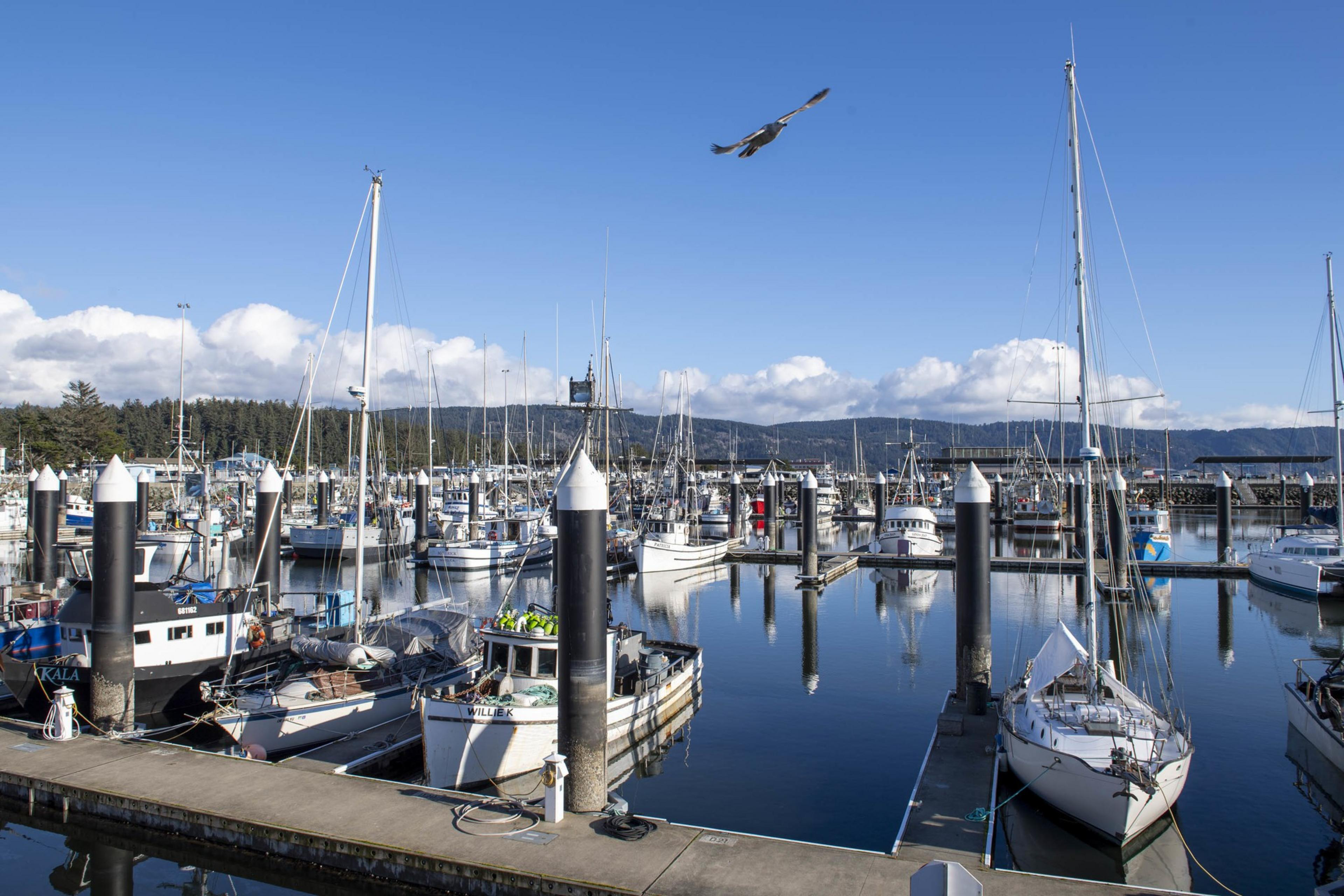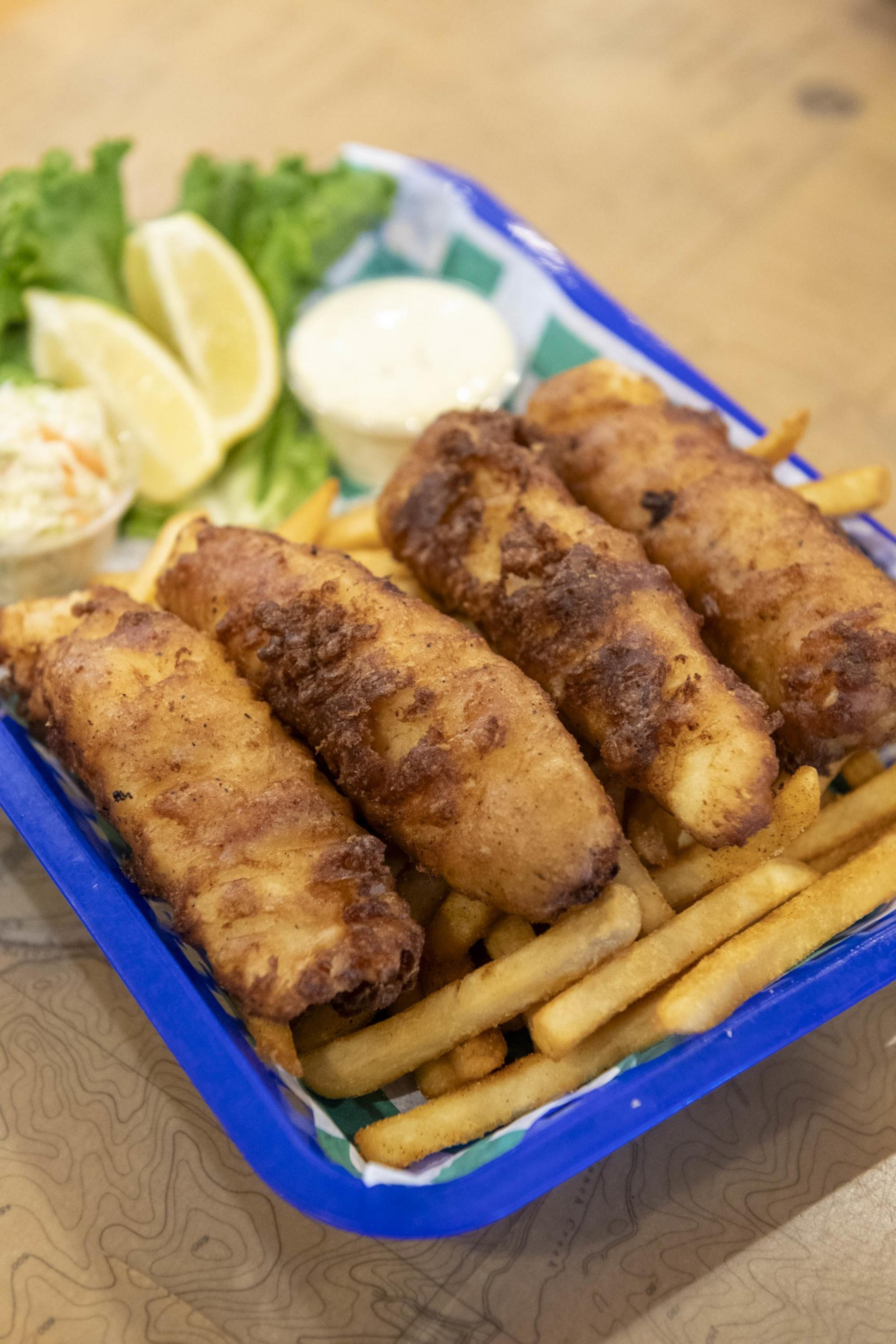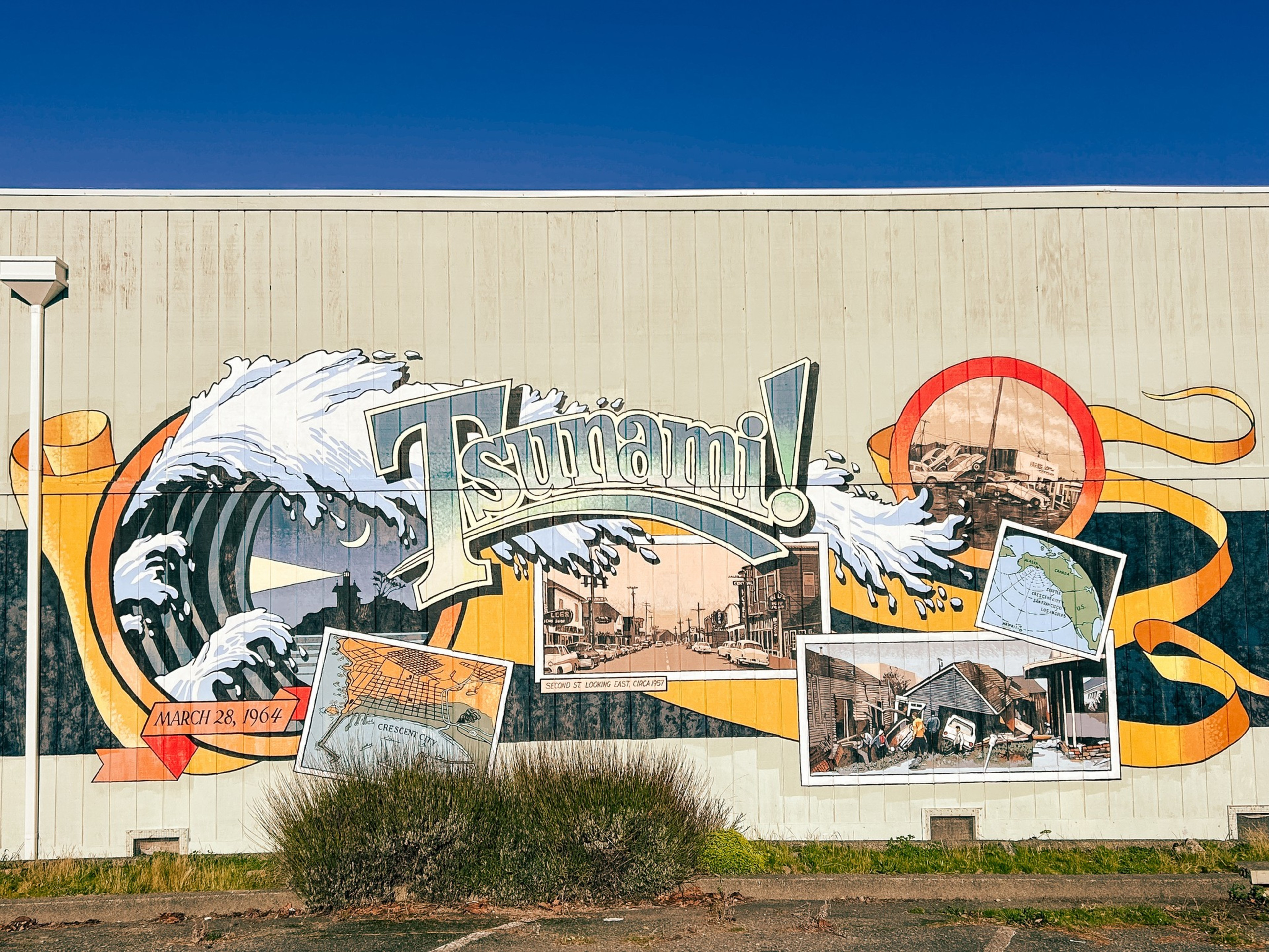The tiniest town you can fly to from a major Bay Area airport isn’t some Colorado ski destination or Hawaiian resort community. It’s right here in California: Crescent City, the tsunami capital of North America and the northernmost place on the coast before you hit Oregon.
And I did it for less than a hundred bucks.
Advanced Airlines flies once daily from Oakland (opens in new tab) — er, San Francisco Bay Oakland International Airport — on surprisingly comfy, 30-seat Dornier 328 jets (opens in new tab), aircraft billed as a “favorite of Fortune 500 companies and sports teams.” It cost $99 each way, although during the summer season, prices start at $142. The hourlong flight to tiny Del Norte County Regional Airport was at most a quarter full. I spent it shooting pictures and video of the sunset striking San Francisco, Marin, and points north — way north.

With a history of being walloped again and again by giant waves (opens in new tab), Crescent City is in a transitional period, slowly transforming from prison town to remote getaway (opens in new tab) among the redwoods. So naturally, I had to spend 48 hours there, checking into the two-story Oceanfront Lodge (opens in new tab) on a Tuesday in January and finding fewer guests than the plane had passengers. I wanted peace and quiet from the bustle of city life, and what I found was near-silence punctuated by the rolling boom of the surf. You don’t get any chiller than that.
To the lighthouse
Crescent City is a peculiar place, with more and better restaurants than you might expect for a town of 6,600 (of which approximately 1,700 are incarcerated at Pelican Bay State Prison (opens in new tab)). It’s also a very wet place, averaging almost 60 inches of rain per year, three times what SF gets. Not a drop fell when I was there, although the moss growing on the sidewalks didn’t seem to suffer.
It would suck to stay in a hotel called the Oceanfront Lodge and get a room that faced the parking lot, so I booked one that overlooked the Pacific for $113 per night. The moonlit beach was strewn with driftwood at crazy angles.

I wanted to get up early and explore, so I started at Battery Point Lighthouse (opens in new tab), a white-with-green-trim landmark that dates to the 1850s. The adage “Never turn your back on the sea” goes double there. The lighthouse sits on a promontory that turns into an island at high tide, the water sweeping over the rock from two directions. I scrambled along the rocks.
“You only have 20 minutes!” the on-duty lighthouse-keeper shouted as she and her husband took their dogs for a morning jaunt. She meant I had 20 minutes to explore the smattering of outbuildings and art made from buoys before I’d be marooned on a temporary island until the tide went out again.
It’s fully automated but staffed all year. The lighthouse-keepers, I later learned, are typically members of the local historical society who spend a month at a time and receive almost no training. Harlan Watkins, who completed his 29th tour of duty at the lighthouse in February, says aside from changing a fuse every two or three years, there’s not much for the keepers to do except assemble jigsaw puzzles, write grant applications to keep the operation funded, and hope no visitors fall in the water.

It happens, apparently. Though the lighthouse has life-buoy rings to throw to anyone who falls in, Watkins has seen people die. “If you go in the water, you’re not going to come out of the water,” he says.
What else is there to do?
Having cheated death at the lighthouse, I took the self-guided Tsunami Walking Tour (opens in new tab), which brought me past several of the massive, anchor-like tetrapods scattered on the harbor to diminish the intensity of the next big wave that comes through, sparing the city from the destruction wrought by the 1964 Alaska earthquake (opens in new tab), the most powerful ever recorded in North America.
The tour also took me past a cannabis dispensary with a Trump flag flying over the parking lot, which isn’t such an incongruous sight if you’re familiar with the Emerald Triangle (opens in new tab)’s heavily armed pot-growers. I scrambled around Whaler Island, on the far side of the harbor from town, to find a random park bench that felt like a secret. I bowled two games at Tsunami Lanes (opens in new tab).



I ate surprisingly well, from ramen at Toyoma Sushi to a magnificent tropical duck with pineapple-and-tomato puree and jasmine rice at Kin Khao (opens in new tab) (no relation to San Francisco’s Michelin-starred restaurants of the same name). The benedict made with freshly caught salmon at Fisherman’s Restaurant (opens in new tab) was well worth $25. I drank a Space Sailor IPA at SeaQuake Brewing (opens in new tab) and threw axes at Port O’Pints Brewing (opens in new tab). Over espresso at Paragon Coffee (opens in new tab), I chatted with locals who had moved to the Bay Area in their 20s only to return in their 40s. They earn less money now and don’t care.

That carefree quality animates daily life in Crescent City. Even the most frazzled city-dweller will appreciate the pace of life in a town where the loudest noise is an 18-wheeler flatbed hauling logs up U.S. 101. I averaged 20,000 steps over three days but never felt rushed. Watching the sunset with a martini (gin, dry, two olives) on the hotel’s nearly empty bar patio felt like getting away with a felony.
But could a town this small and remote — SF is more than six hours away by car — really become a destination? Levi Stockton, CEO of Advanced Air, said the two routes from Crescent City (serving Oakland and L.A.’s Hawthorne Municipal Airport) have been successful since their 2024 debut, and the airline plans to keep them. But for now, most travelers are heading from, not to, Crescent City, whether on business or for medical appointments. Summer lures whale watchers and adventurers north to the redwoods, but much of the tourism is southbound, Stockton said. “Surprisingly, we get a lot of people going to Disneyland.”

That’s backward. Because the area around Crescent City is the real magic kingdom. With Yosemite in disarray and Joshua Tree overrun with Airbnbs, the time is right to visit Redwood National and State Parks (opens in new tab) — a complex that begins just outside of town and extends for miles down the coast — or the other six national parks within a day’s drive along Northern California and southern Oregon’s “Circle of Discovery (opens in new tab).” Or you can kayak on the Smith River (opens in new tab), which, as the state’s longest undammed river, is renowned for steelhead trout fishing.
Or just kick it in what feels like the last untrammeled places in a state with 40 million people. The ocean waves hit different. Watkins, the lighthouse-keeper, said the wait for a rotation at Battery Point can be up to three years. I think I understand why.
